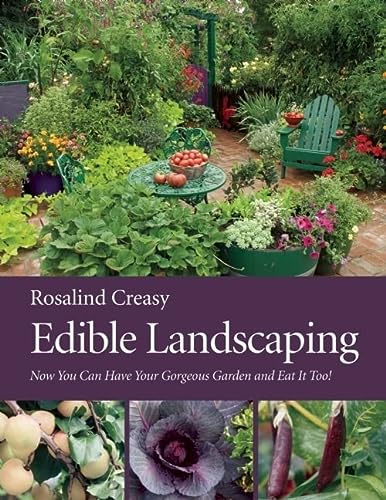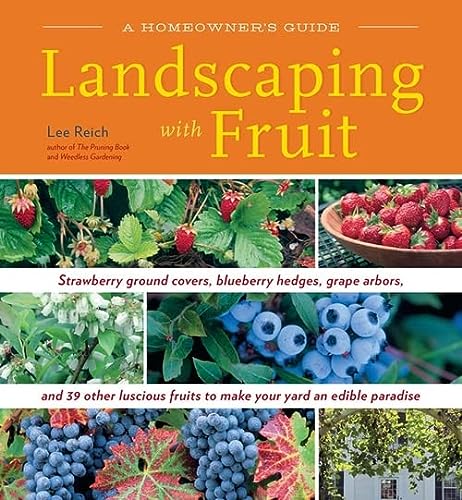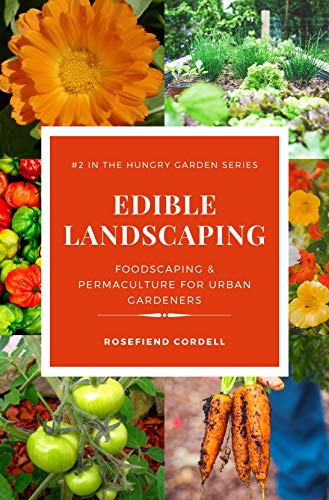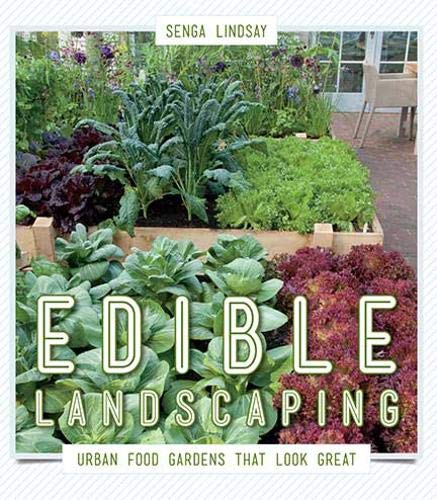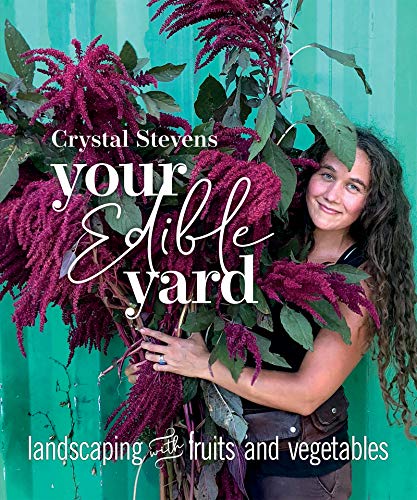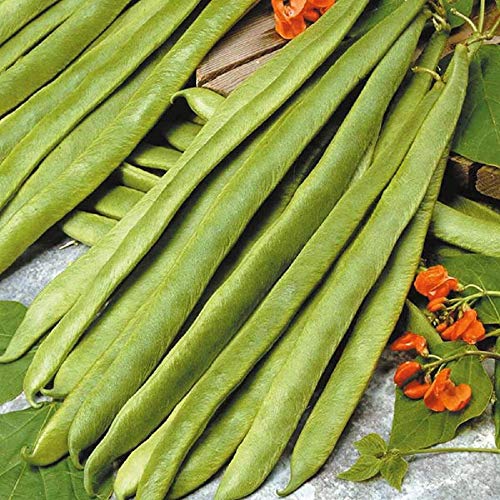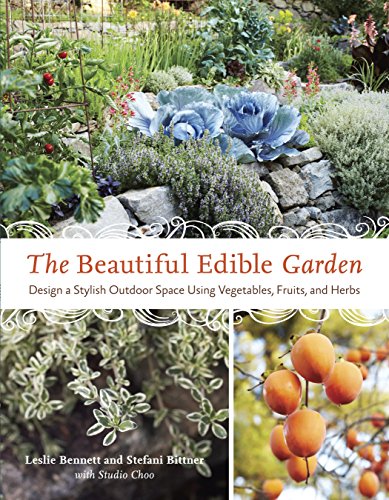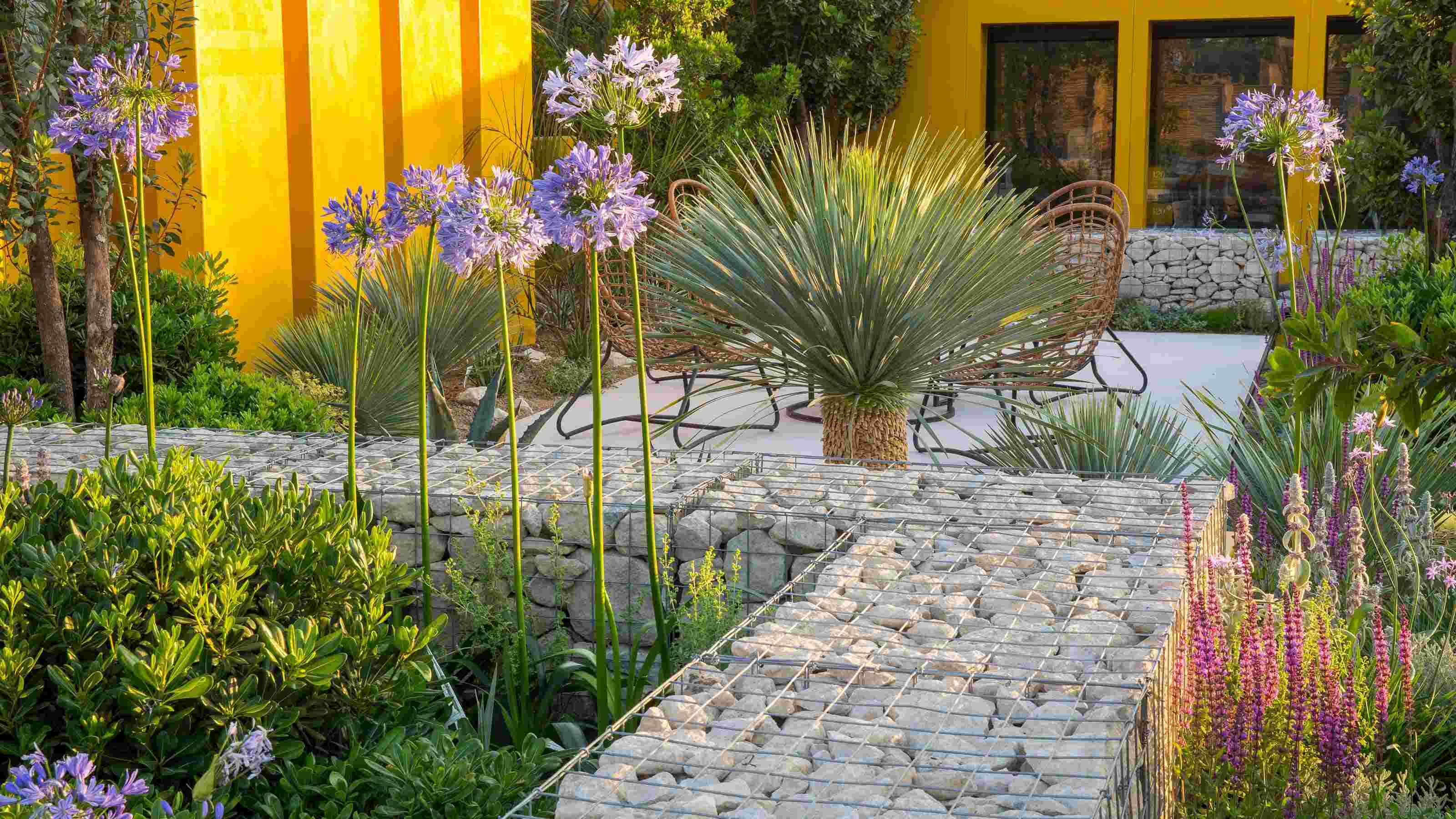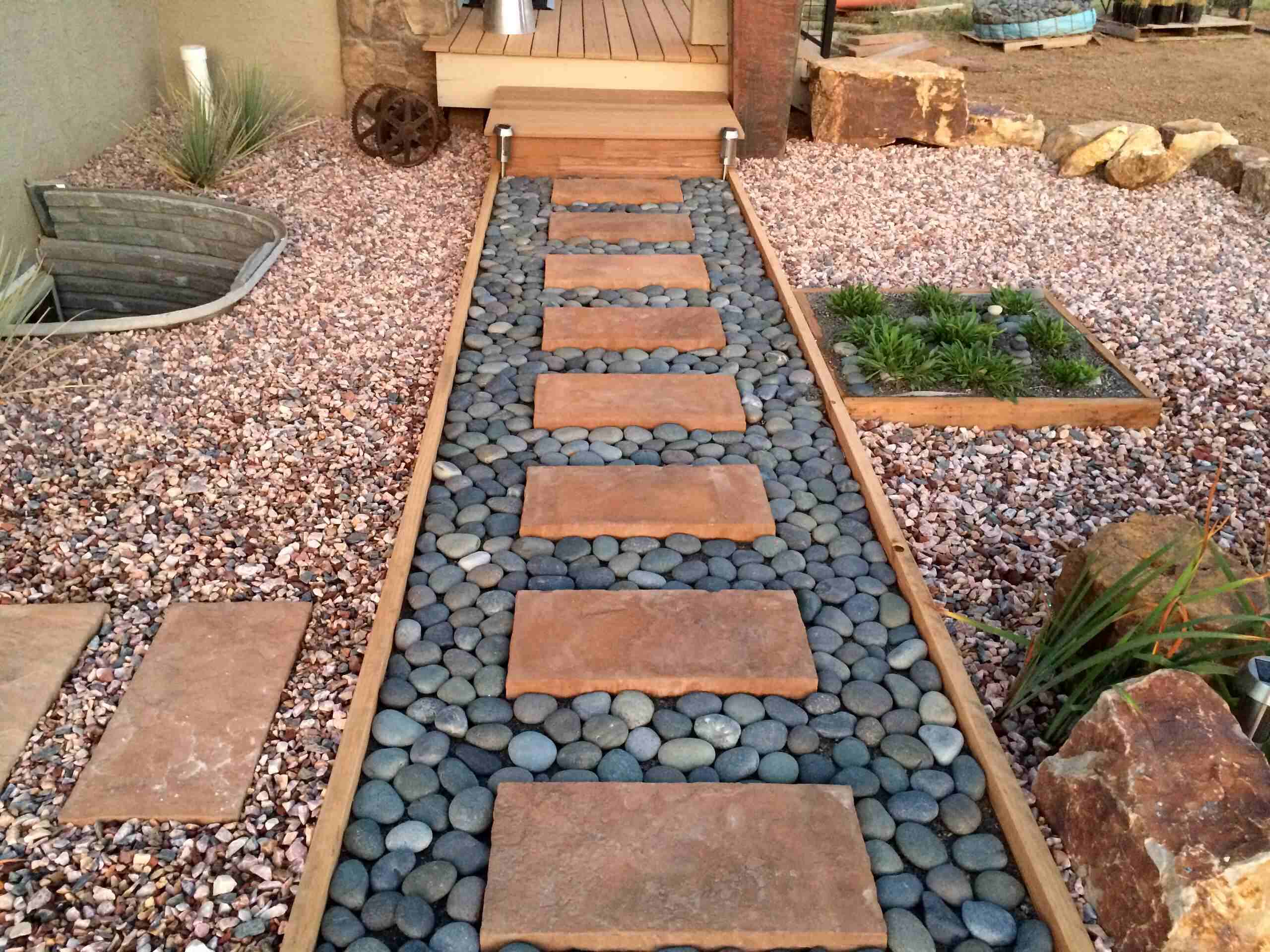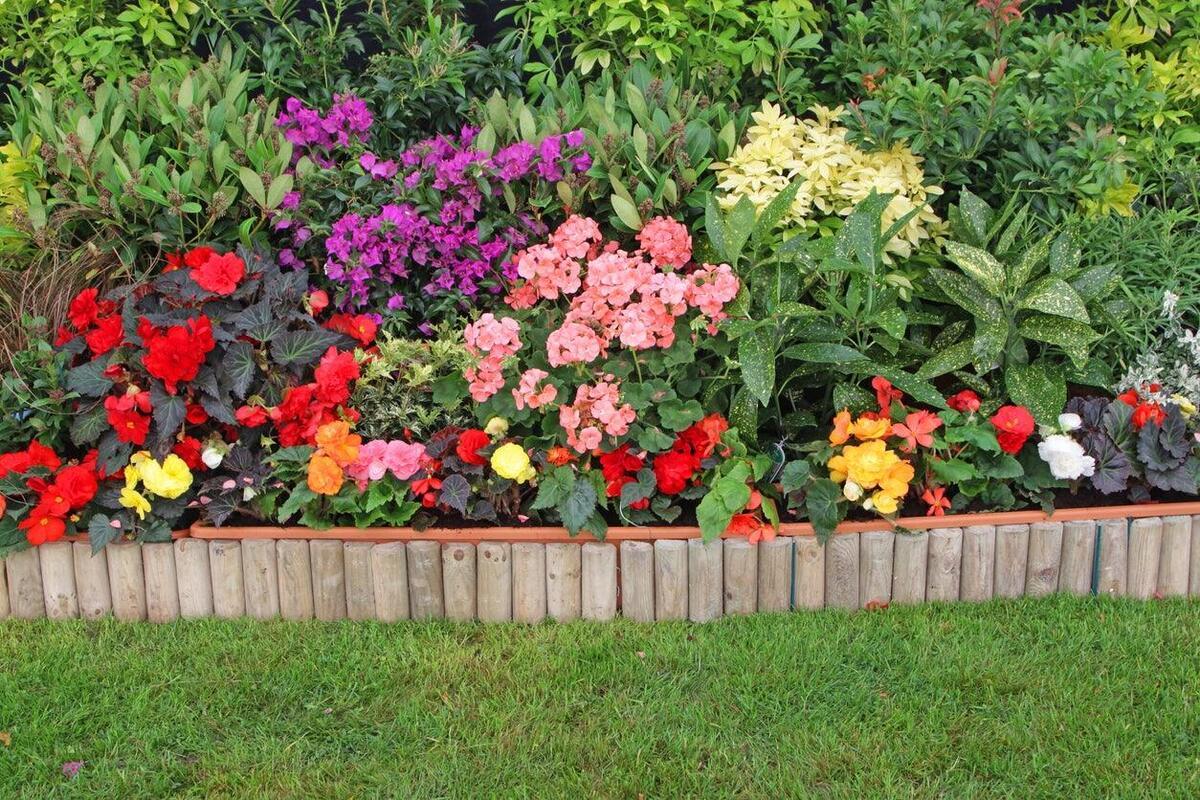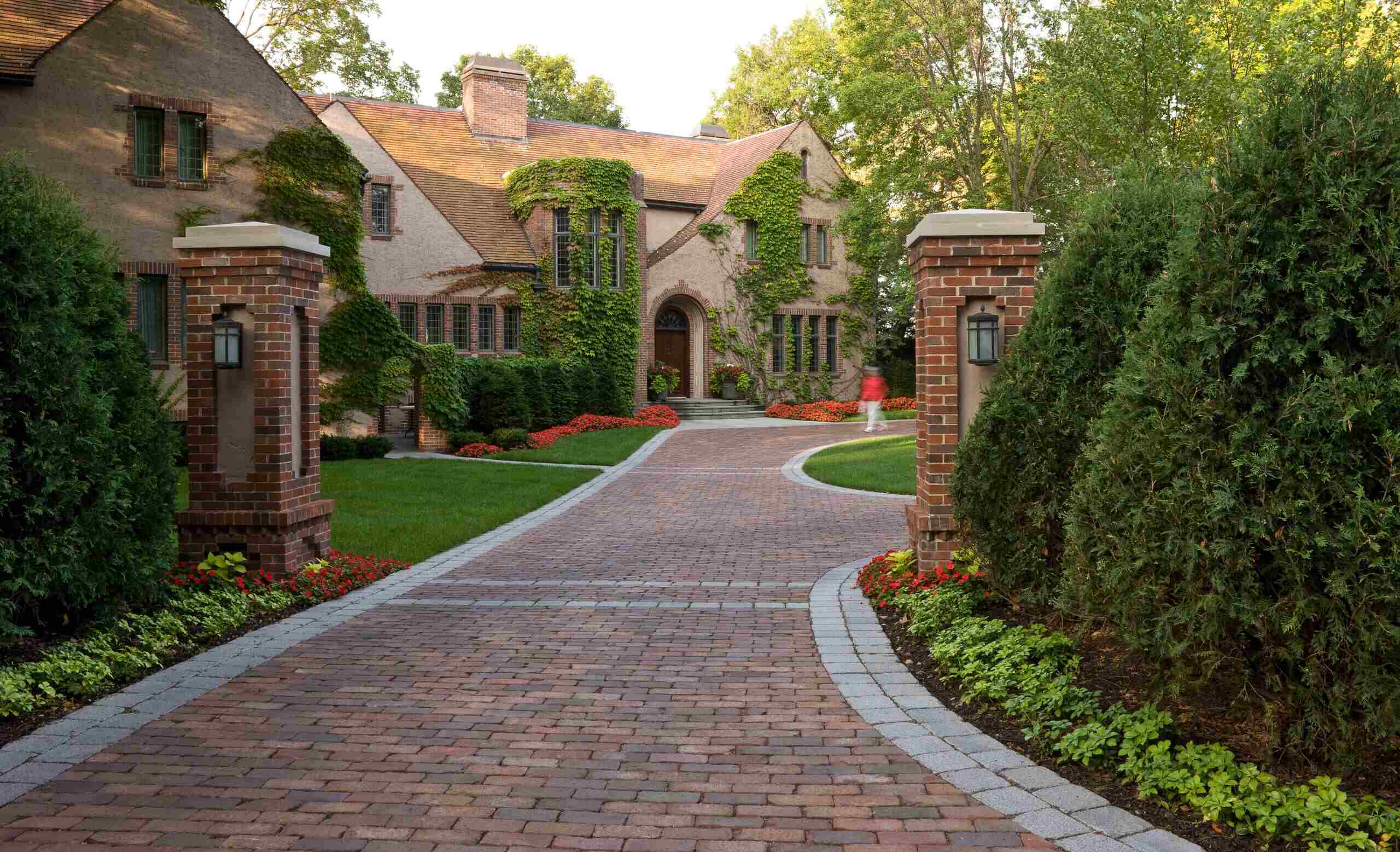Home>Garden Design>Landscape Design>8 Amazing Edible Landscaping for 2024
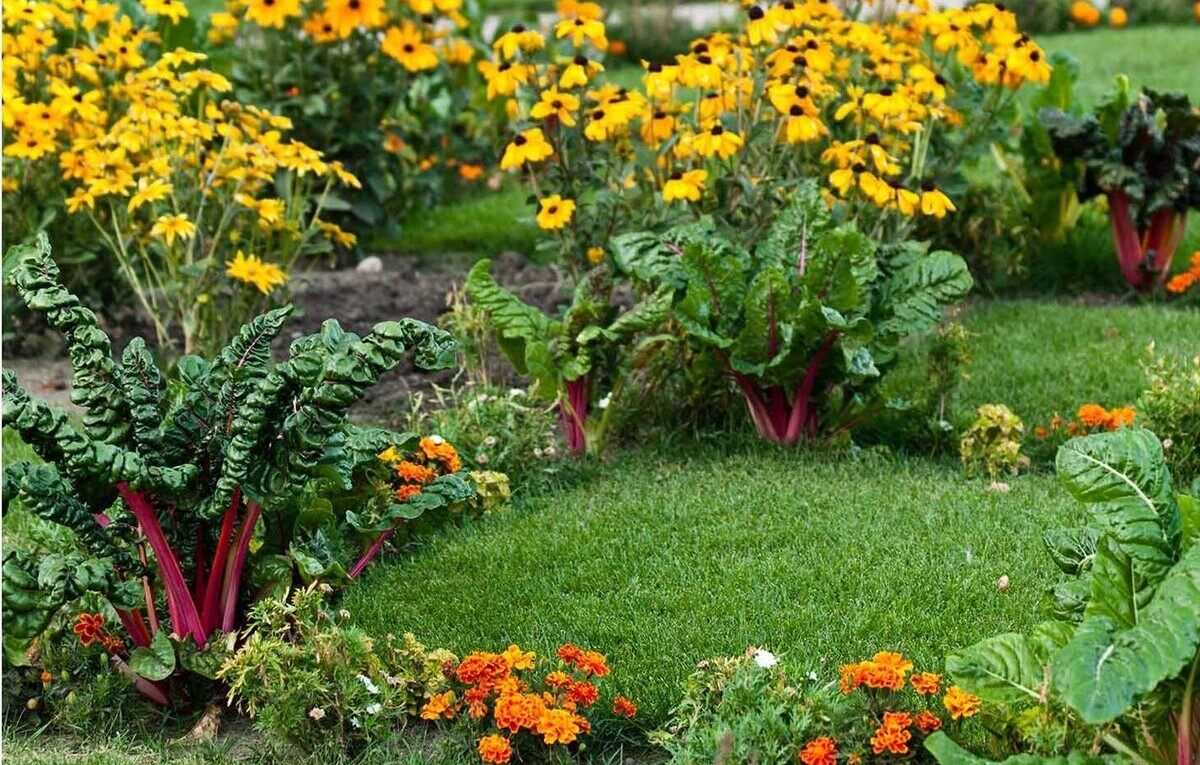

Landscape Design
8 Amazing Edible Landscaping for 2024
Published: October 14, 2023
Discover 8 incredible edible landscaping ideas for 2023! Transform your outdoor space with mouthwatering gardens and combine beauty with functionality.
(Many of the links in this article redirect to a specific reviewed product. Your purchase of these products through affiliate links helps to generate commission for Chicagolandgardening.com, at no extra cost. Learn more)
Introducing 8 Amazing Edible Landscaping for 2023! In the ever-evolving world of gardening and home design, edible landscaping has emerged as a delightful and practical trend. Gone are the days when gardens were solely ornamental; now they serve as a bountiful source of fresh produce as well. With the upcoming year, we can look forward to an array of innovative and beautiful edible landscaping ideas that seamlessly blend aesthetics and functionality. From vertical gardens brimming with herbs and greens to fruit-bearing trees strategically adorning walkways, the possibilities are endless. Let us dive into the fascinating realm of edible landscaping and explore these eight incredible ideas that will transform outdoor spaces into both stunning and fruitful havens.
Overall Score: 8.4/10
Edible Landscaping with a Permaculture Twist: How to Have Your Yard and Eat It Too is a comprehensive guide for gardeners who want to incorporate permaculture principles and design into their landscapes. Written in a narrative style with a comfortable voice, this book offers creative ideas and specific projects for all levels of gardeners. It covers topics such as mushroom growing, spirals, swales, and cob ovens, breaking down each project start to finish in a simple and easy-to-understand manner. The book also includes photos, drawings, and easy-to-follow directions. While it focuses more on permaculture techniques rather than traditional landscaping, it provides practical information for creating a sustainable food system. With its informative content and beautiful illustrations, this book is a great resource for novice and experienced gardeners alike.
Key Features
- Offers creative ideas and specific projects for all levels of gardeners
- Covers topics such as mushroom growing, spirals, swales, and cob ovens
- Provides photos, drawings, and easy-to-follow directions
- Focuses on permaculture techniques for creating a sustainable food system
- Suitable for novice and experienced gardeners
Specifications
- Dimension: 7.90Lx0.50Wx9.20H
Pros
- Great projects for all levels of gardeners
- Simple and easy-to-understand instructions
- Nice narrative style and comfortable voice
- Informative content with beautiful illustrations
- Provides practical information for creating a sustainable food system
Cons
- Lacks in-depth information on certain topics
- Not focused on traditional landscaping techniques
- Some readers find it written in a casual style
- Limited examples of plant guilds
- Not suitable for those looking for a list of attractive flowers
Edible Landscaping with a Permaculture Twist is a valuable resource for gardeners who want to incorporate permaculture principles and design into their landscapes. While it may lack in-depth information and focus more on permaculture techniques, it provides practical and informative content for creating a sustainable food system. The book’s easy-to-understand instructions, creative ideas, and beautiful illustrations make it suitable for gardeners of all levels. Whether you’re a novice or experienced gardener, this book offers a wealth of knowledge and inspiration for transforming your yard into a productive and aesthetically pleasing space. Overall, it’s a great addition to any gardening library.
Overall Score: 9/10
Edible Landscaping is a comprehensive guide for creating beautiful gardens that not only look stunning but also provide a bountiful harvest. Written by Rosalind Creasy, a renowned landscape designer, this book is filled with gorgeous photographs, practical advice, and creative ideas. Whether you have a small urban yard or a sprawling garden, this book has something for everyone. From trees and vines to herbs and flowers, Creasy covers it all, and even offers tips on companion planting and using color and form to enhance your garden's visual appeal. With specific advice on maintenance and harvesting, this book is a must-have for any gardener looking to transform their landscape into a stunning edible paradise.
Key Features
- Beautiful gardens that look good, do good and taste good
- Covers trees, vines, companion planting, herbs, flowers, shrubs
- Provides specific advice on landscape aspect and maintenance
- Includes stunning photographs and creative ideas
Specifications
- Color: Multicolor
- Dimension: 8.48Lx0.90Wx11.06H
Pros
- Comprehensive and informative
- Beautiful photographs
- Creative ideas for all garden sizes
- Specific advice for maintenance and harvesting
Cons
- Lack of landscape pictures and drawings
- Focus on cottage style gardens
- Text can be redundant
Edible Landscaping is a must-read for any gardener interested in creating visually stunning gardens that also produce delicious and nutritious food. With its comprehensive coverage, stunning photographs, and practical advice, this book is a valuable resource for gardeners of all skill levels. While some readers may find the lack of landscape pictures and the focus on cottage style gardens to be limiting, the book still offers creative ideas that can be adapted to any garden style. The specific advice on plant care and maintenance, along with the beautiful photographs, make this book both informative and inspiring. Whether you have a small space or a large yard, Edible Landscaping will help you transform your garden into a beautiful and productive oasis.
Overall Score: 9/10
Landscaping with Fruit: Strawberry ground covers, blueberry hedges, grape arbors, and 39 other luscious fruits to make your yard an edible paradise is a comprehensive guide for homeowners looking to create a beautiful and fruitful landscape. This book covers various types of fruits, providing information on climate compatibility, space requirements, training and pruning, and harvesting. It also includes stunning illustrations and helpful maps to assist readers in selecting the right plants for their region. With practical advice and detailed descriptions, this book serves as an excellent resource for individuals interested in integrating fruit plants into their gardens, creating an edible oasis right at home. Whether you are a novice or experienced gardener, this book offers valuable insights and inspiration.
Key Features
- Comprehensive guide for creating an edible landscape
- Detailed information on various fruit plants
- Climate compatibility and space requirements
- Training, pruning, and harvesting tips
- Stunning illustrations and helpful maps
Specifications
- Dimension: 9.25Lx0.50Wx10.00H
Pros
- Easy to read and well-organized
- Provides detailed information on each plant
- Offers practical advice for designing an edible landscape
- Includes beautiful illustrations and maps
Cons
- Lacks information on invasive species
- Limited coverage of certain fruit varieties
- Subjective rating system
Landscaping with Fruit: Strawberry ground covers, blueberry hedges, grape arbors, and 39 other luscious fruits to make your yard an edible paradise is a fantastic resource for homeowners interested in incorporating fruit plants into their landscapes. It presents a wealth of information on different fruit varieties, their requirements, and design considerations. While the book offers valuable insights and practical advice, it may benefit from further emphasis on invasive species and a more comprehensive coverage of fruit types. Overall, this guide is a must-read for anyone looking to create a beautiful and fruitful garden.
Overall Score: 8/10
Transform your urban garden into a beautiful and edible oasis with this comprehensive guide. Learn about foodscaping, permaculture, and sustainable gardening practices to create a functional and visually appealing landscape. The author provides engaging and educational content, making the concept of edible gardens come to life. Discover how to incorporate edible plants into your garden and kitchen, from basics like pollinators, animals, and soil prep to a deeper dive into categories of edible annuals and perennials. With real-world examples and a friendly, breezy writing style, this book is the ideal starting point for anyone interested in designing a beautiful and practical edible yard.
Key Features
Specifications
- N/A
Pros
- Engaging and educational content
- Covers basics and deeper dive into edible gardening
- Written with a friendly, breezy and humorous author voice
Cons
- Lacks pictures of edible landscapes
- Some readers found the book light on substance
Edible Landscaping: Foodscaping and Permaculture for Urban Gardeners is a valuable resource for those looking to transform their city garden into a functional and beautiful edible oasis. The author’s engaging writing style combined with practical advice makes this book a must-read for both beginners and experienced gardeners. While some readers wished for more visual aids and found the content lacking, overall, this guide presents the fundamentals and inspires readers to explore the world of edible gardening. Whether you’re a green thumb or just starting out, this book will provide you with the knowledge and motivation to create an urban garden that is both aesthetically pleasing and bountiful.
Overall Score: 7/10
Edible Landscaping: Urban Food Gardens That Look Great is a comprehensive guide for gardeners interested in creating beautiful and functional edible landscapes. This book provides valuable tips and ideas from a knowledgeable author who knows how to make the most of your garden. With a focus on urban gardening, the suggestions and techniques can be applied in various locations, including the UK. Whether you want an attractive garden or a productive one, this book has you covered. However, some readers have reported issues with the print quality, with repeated chapters. Overall, this book offers insightful advice for those looking to transform their garden into a food-producing oasis.
Key Features
Specifications
- Dimension: 8.00Lx0.40Wx8.90H
Pros
Cons
Edible Landscaping: Urban Food Gardens That Look Great is a valuable resource for both beginners and experienced gardeners. Despite some printing issues, this book provides a wealth of useful information on creating beautiful gardens that can also produce delicious food. The author’s expertise and practical tips make this book an excellent choice for anyone interested in edible landscapes. Whether you’re in a city or the countryside, this guide offers inspiration and guidance for making the most of your garden. Overall, it’s a worthwhile addition to any gardener’s library.
Overall Score: 8.5/10
Your Edible Yard: Landscaping with Fruits and Vegetables is a comprehensive resource by Crystal Stevens that offers avid gardeners tips and tricks to transform their yard into a thriving food producing space. This beautifully illustrated book showcases stunning photos and guides readers on incorporating permaculture principles into their yard. It also provides DIY herbal remedies and recipes to promote a healthier environment. Whether you're a seasoned gardener or just starting out, this book is a must-have for anyone looking to enhance their health and create a sustainability-focused landscape.
Key Features
Specifications
- Dimensions: 7.50Lx0.69Wx9.00H
Pros
Cons
Your Edible Yard: Landscaping with Fruits and Vegetables is an invaluable resource for turning your yard into an edible oasis. Crystal Stevens’ expertise shines through in this well-rounded guide that covers everything from soil improvement to companion planting. The stunning visuals and easy-to-follow instructions make this book both informative and inspiring. While some readers found repetitive sections and a higher price tag for the Kindle version, overall, this book receives high praise for its wealth of knowledge and practical advice. If you’re looking to create a beautiful and bountiful edible yard, this book is a fantastic companion.
Overall Score: 7.5/10
Looking to add a touch of history to your garden? Look no further than the Scarlet Runner Bean Seeds. These delicious beans were commonly eaten in early American colonies and in Britain. They are a fast-growing annual that prefer full sun and a structure to climb. Plant them in moderately fertile soil that is amended with plenty of organic matter. Not only will they provide you with tasty beans, but they also make a good choice for edible landscaping. Each pack of seeds is packaged in air-tight, resealable bags for your convenience.
Key Features
- Delicious beans commonly eaten in early American colonies and in Britain.
- A fast growing annual that prefers full sun and a structure to climb.
- Plant them in moderately fertile soil that is amended with plenty of organic matter.
- Runner beans make a good choice for edible landscaping.
- Every product is packaged in air-tight, resealable bags!
Specifications
- Color: White
Pros
- Delicious and historically significant beans
- Fast-growing and easy to grow
- Good choice for edible landscaping
- Seeds are packaged in air-tight, resealable bags
Cons
- Price may be considered high by some
- Some customers experienced poor shipping
- Germination rate may vary
The Scarlet Runner Bean Seeds are a delightful addition to any garden. Not only do they provide a taste of history with their delicious beans, but they also add beauty as a climbing plant. These fast-growing annuals are easy to care for and make a great choice for edible landscaping. The air-tight, resealable packaging ensures the freshness of the seeds. While the price and shipping may be a concern for some, the overall feedback from customers is positive. With a solid germination rate and vigorous growth, these Scarlet Runner Beans are sure to bring joy to your garden.
Overall Score: 8/10
The Beautiful Edible Garden is a stunning book that combines the beauty of design with the functionality of an edible garden. With gorgeous pictures and inspirational tips, this book is a must-have for any gardening enthusiast. It covers all aspects of edible gardening landscapes, from hardscaping to interplanting for seasonal interest. The book also includes information on a wide range of edible plants, both traditional and unique. While some practical advice may be more suitable for certain gardening zones, the book still offers valuable insights and ideas. Whether you're a beginner or an experienced gardener, this book will inspire you to create a beautiful and productive outdoor space.
Key Features
Specifications
- Color: Multicolor
- Dimension: 7.06Lx0.60Wx8.94H
Pros
- Gorgeous pictures and inspirational tips
- Covers all aspects of edible gardening landscapes
- Includes information on a wide range of edible plants
Cons
- Some practical advice may not be applicable to all gardening zones
The Beautiful Edible Garden is a comprehensive and visually stunning guide for creating a stylish outdoor space with vegetables, fruits, and herbs. While some of the practical advice may not be suitable for all gardening zones, the book offers a wealth of inspiration and ideas. The gorgeous pictures and insightful tips make it a must-have for any gardening enthusiast. Whether you’re a beginner or an experienced gardener, this book will help you transform your backyard into a beautiful and productive edible garden. With a focus on design and functionality, The Beautiful Edible Garden demonstrates that combining aesthetics with functionality is both achievable and rewarding. Get ready to be inspired and create your own stunning edible garden!
Buyer's Guide: Edible Landscaping
*Transforming your yard into an abundant oasis*
Benefits of Edible Landscaping
- Combine beauty and function in your outdoor space
- Grow your own fresh produce without the need for a separate garden
- Increase biodiversity by attracting pollinators and beneficial insects
- Reduce your carbon footprint by sourcing food from your backyard
- Connect with nature and foster a deeper appreciation for the environment
Considerations Before Starting
- Available Space: Assess the size of your yard and determine how much space you have for edible plants.
- Sunlight Exposure: Take note of the sunlight patterns in your yard to choose appropriate plants.
- Soil Quality: Test your soil's pH and fertility levels to ensure a favorable environment for your plants.
- Watering System: Consider installing an efficient watering system, such as drip irrigation, to conserve water and ensure your plants receive adequate hydration.
- Maintenance: Understand the level of commitment required to care for edible plants, considering factors like pruning, pest control, and seasonal adjustments.
Choosing the Right Plants
- Climatic Suitability: Research plants that thrive in your specific climate and can withstand temperature fluctuations.
- Fruit Trees: Consider planting fruit trees like apple, peach, or cherry, which provide shade, beauty, and delicious fruits.
- Herbaceous Perennials: Incorporate perennial herbs such as rosemary, thyme, and lavender for a fragrant and functional addition.
- Container Gardening: Utilize containers for growing herbs, vegetables, and small fruiting plants, offering flexibility and easy maintenance.
- Pollinator-friendly Plants: Include flowers like milkweed, lavender, and bee balm to attract pollinators like bees and butterflies.
Designing your Edible Landscape
- Layering: Create depth and visual interest by incorporating plants of varying heights and sizes.
- Grouping: Arrange plants in clusters to create a sense of abundance and make harvesting more convenient.
- Color Combinations: Choose plants with attractive foliage colors and flowers that complement each other, adding visual appeal to your landscape.
- Seasonal Variety: Select plants that offer a range of harvest times to ensure a constant supply of fresh produce throughout the year.
- Edible Ornamentals: Integrate decorative edible plants like Swiss chard, kale, or colorful vegetables for both aesthetic and culinary purposes.
Maintaining Your Edible Landscape
- Pruning: Regularly prune your plants to promote healthy growth, maintain their shape, and ensure ample sunlight penetration.
- Weeding: Stay on top of weed control to avoid competition for nutrients and water.
- Pest Management: Keep an eye out for pests and diseases, and consider natural remedies or organic pest control options.
- Crop Rotation: Rotate crops annually to improve soil health, reduce pest infestations, and optimize plant performance.
- Mulching: Apply mulch around your plants to conserve moisture, suppress weeds, and regulate soil temperature.
Harvesting and Enjoying Your Edible Landscape
- Timing: Harvest your produce when it reaches the appropriate stage of maturity to ensure maximum flavor and nutritional value.
- Enjoyment: Savor the fruits of your labor! Incorporate your homegrown ingredients into delicious meals and share the joy with family and friends.
- Preserving: If you have surplus produce, consider preserving it through methods like canning, freezing, or dehydrating for future use.
- Continued Care: Even after harvesting, continue providing care and maintenance to your plants to support their long-term health and productivity.
- Experimentation: Explore creative ways to use your homegrown produce, experiment with new recipes, and enjoy the satisfaction of eating what you have grown!
—
Frequently Asked Questions about 8 Amazing Edible Landscaping For 2024
Absolutely! Even in a limited space, you can utilize containers, vertical gardening techniques, and compact fruit trees to create a beautiful and productive edible landscape.
Not at all! Edible landscaping is suitable for beginners and seasoned gardeners alike. With the right resources and a willingness to learn, anyone can enjoy the benefits of growing their own food.
Regularly enrich your soil with compost or organic fertilizers to provide essential nutrients. Additionally, consider practicing crop rotation to prevent nutrient depletion and control pests and diseases.
While some pests may be attracted to edible plants, implementing natural pest control methods, maintaining plant health, and introducing beneficial insects can help minimize pest issues.
Yes! Edible landscaping promotes sustainability by reducing the need for transportation and packaging of store-bought produce. It also enhances biodiversity by providing habitat and food sources for local wildlife.
The time it takes for plants to mature varies depending on the species and growing conditions. While some plants may yield food within months, others, like fruit trees, can take several years to reach full productivity. Patience is key!
If you encounter challenges, seek advice from local nurseries, gardening communities, or extension services. They can provide guidance tailored to your specific region and help troubleshoot any issues you may face.
Absolutely! Integrating edible plants alongside ornamental ones is a fantastic way to add functional beauty and enhance your overall landscape design. Just ensure they have similar sunlight and water requirements.
It’s essential to identify plants correctly and avoid toxic or poisonous ones. Familiarize yourself with safe harvesting practices and be cautious when using any chemicals or pesticides, opting for organic alternatives whenever possible.

